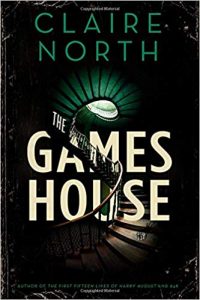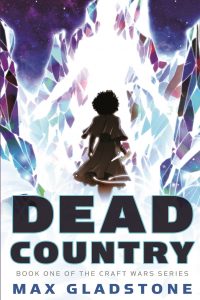Tim Pratt reviews Kate Atkinson
 You’ve got to love a literary novel that starts with the protagonist shooting Hitler in the heart in 1930.
You’ve got to love a literary novel that starts with the protagonist shooting Hitler in the heart in 1930.
Kate Atkinson is best known for her marvelous literary mysteries, notably the Jackson Brodie novels. While I eagerly await the next installment in that series, I was pleased to pick up her new standalone, Life After Life, and even more delighted when I realized it has a speculative premise. Apart from a brief and enigmatic opening section (with the aforementioned Hitler-killing), it begins in 1910 with a mother about to give birth to a daughter named Ursula Todd, newest member of a prosperous English family. Baby Ursula promptly strangles on her umbilical cord and dies… and then is born again, this time in slightly different circumstances, now with a doctor present to keep her alive. And so it goes throughout her youth: Ursula lives, grows up, has siblings and adventures… and dies, again and again, by drowning, or struck down by illness, or inadvertently suffocated, or a victim of terrible accidents. Each time Ursula is reborn – or her timeline is reset – things play out a little differently, and she lives longer… often only to stumble into more terrible tragedies later.
Even without the speculative twist, this would be a fine literary novel of society, history, and character, centered on the WWII period, full of finely observed scenes, beautifully drawn characters, excellent writing, and a trapdoor spider wit that leaps out at surprising moments. But the overlapping and repeating and diverging timelines allow Atkinson to show us the reactions of her most fully-realized character, Ursula herself, across a vastly expanded range of the human condition.
It’s hard to know how to deal with potential spoilers in a novel where the character dies repeatedly, but I’ll do my best to be discreet. Ursula lives through (or fails to live through) the Blitz in assorted capacities: as a lonely citizen, a warden helping in rescue operations, a member of government, and the lover of a high-ranking Admiralty official. In another timeline, a trip to Europe ends with her falling in love with a man in Germany, settling there, and seeing the rise of the Nazis firsthand, even meeting Eva Braun and becoming a fringe member of the Fuhrer’s social circle. (That timeline doesn’t end very well.)
But Life After Life is more than just a game of literary ‘‘what if,’’ or an exercise in seeing how small changes can alter lives in big ways. Atkinson is up to something deeper. While Ursula is very young, the changing circumstances that lead to her survival depend on random chance – someone getting stuck in the snow, or not, or someone noticing a child flailing in the waves at the beach, or not. But as she grows older, Ursula intervenes to save her own life, driven by vague compulsions and moments of deja vu, which warn her of danger and prompt her to act. She never quite remembers the timelines in which she died, but they seem to cast shadows over her. One of her childhood attempts to save herself leads her to shove a maid down the stairs (otherwise the woman would go into the city, contract influenza, bring it home, give it to Ursula, and cause her death). It’s a violent act, but in other lifetimes, lesser attempts at discouragement failed. That behavior gets her sent to a therapist, who fails to understand Ursula’s situation, but does teach her about reincarnation, which provides a metaphorical lens through which to view her circumstances.
In one of the later timelines, when Ursula manages to survive into the 1960s, she muses consciously about alternate history. In the aftermath of Israel’s Six Day War, she speculates on how the early death of Hitler would have changed the fate of Europe and the Middle East entirely. Does some shadow of that thought travel with her to her next rebirth, to influence her new decisions? If so, it raises an essential question: is there a reason Ursula keeps being reborn, and trying new approaches to life? Is the universe pushing her toward some particular act or ending, or is it just random iterations, with life itself as the only goal? The repeated appearance of the phrase ‘‘amor fati’’ – love of one’s fate, or a cheerful acceptance of one’s circumstances, no matter how bad they seem – suggests one interpretation, as does a moment late in the novel when Ursula muses, ‘‘Life wasn’t about becoming, was it? It was about being.’’ (Well, maybe, but Ursula’s life doesn’t necessarily seem to agree.)
One could argue that there’s nothing truly at stake in Life After Life, because Ursula always gets to try again when she fails at life (or life fails her). But Atkinson is so adept at showing the emotional impact of changing circumstances on her heroine that her tragedies are always harrowing. Because no life is lived in isolation, Ursula’s actions impact secondary characters, too, so that Ursula herself sometimes seems to be the cruel hand of fate – her presence can prevent a childhood friend from being killed, or send a man to his death. Further, because Ursula’s death can come at any time, it actually serves to increase the suspense, especially in those moments when Ursula is living a good life the reader would like to see continue for a while. It’s a rare novel in which the reader genuinely fears that the main character could die on the next page at literally any moment. You seldom get to relax here.
It’s the most sophisticated literary approach to the idea of the multiverse I’ve read in a long time, and Ursula is unforgettable, in all her incarnations.






